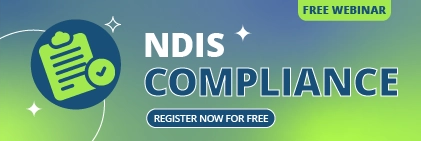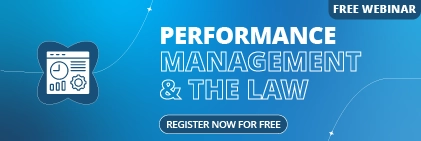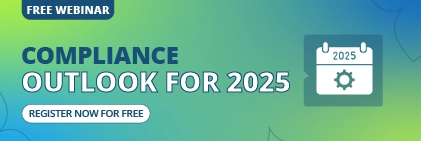If you work in HR at a mid-sized company, chances are you’ve felt the growing pains of managing people and data manually.
Payroll spreadsheets, email chains, lost documents…they all add up to one big headache.
As your business grows, so does the complexity of managing employees. You’ve got more people to onboard, more records to track, and more compliance requirements to juggle.
That’s where a modern HRMS (Human Resource Management System) comes in.
For mid-sized companies, an HRMS isn’t a luxury; it’s a necessity. It helps you cut down on repetitive admin, stay compliant, and keep employees happy with simple self-service tools.
In this guide, we’ll explore the top features to look for in an HRMS that’s designed for growing businesses like yours.
What is an HRMS System?
A HRMS is an all-in-one software system that helps you manage every part of your employee lifecycle.
From hiring and onboarding to payroll, training, and performance reviews – an HRMS gives you a single, easy-to-use platform that stores employee data securely and automates everyday tasks.
It’s often confused with terms like HRIS (Human Resource Information System) or HCM (Human Capital Management).
The difference? HRMS goes further. It not only stores employee data but also manages workflows, compliance, payroll, and analytics.
For mid-sized companies, this means less manual work and more time to focus on people, culture, and strategy. Whether you’ve got 50 employees or 500, an HRMS helps you operate with the same efficiency as a large enterprise without needing a massive HR team.
Why Mid-Sized Companies Need an HRMS
Running a mid-sized company is all about balance. You’re big enough to need structure, but small enough that every decision matters. Without the right tools, HR can quickly become a bottleneck.
Here’s why investing in an HRMS makes such a difference:
- Scaling Becomes Easier: As your team grows, spreadsheets and manual processes can’t keep up. An HRMS grows with you, handling more employees without adding complexity.
- Compliance is Simplified: Managing employee records and staying on top of labour laws is no small task. An HRMS ensures you meet every regulation automatically – reducing risk and stress.
- Employee Experience Improves: Today’s employees expect digital convenience, being able to check payslips, request leave, or update their details without waiting on HR. A modern HRMS makes that possible.
- Better Data, Better Decisions: With all your data centralised, you can make smarter choices about hiring, training, and retention. Reports that used to take hours are ready in seconds.
- HR Teams Can Focus on Strategy: Automation handles repetitive work, allowing you to spend more time improving culture, engagement, and productivity.
In short, an HRMS empowers you to manage growth confidently, keeping your people happy and your operations compliant.
Top Features to Look for in an HRMS System
Now, let’s get to the key features your HRMS absolutely needs to support a mid-sized business.
1. Centralised Employee Database
Every HR professional knows the struggle of scattered data. Employee details might sit in spreadsheets, performance notes in folders, and absence records in someone’s inbox.
A centralised employee database brings all that information into one organised and secure hub.
With a good HRMS, you can see every employee’s details, from job title and salary history to performance notes, in one place—no more chasing files or cross-checking different systems. Updates made once appear everywhere instantly, saving hours of admin work each week.
When an employee changes departments, the HRMS automatically updates their reporting line, payroll, and permissions. This eliminates the need for manual edits and prevents mistakes.
This feature also helps with compliance. Maintaining an accurate record of every employee enables you to generate reports for audits or legal reviews quickly and efficiently. Everything is stored securely in the cloud, reducing the risk of misplaced paperwork.
In short, a centralised database becomes your single source of truth for all people’s data: accurate, reliable, and easy to access.
2. Automated Payroll Management
Payroll is one of the most critical areas of HR. Even a small error in tax or pay calculations can cause serious problems.
An HRMS with automated payroll management helps you avoid those mistakes.
Automation means you no longer need to calculate pay, tax, or leave deductions manually. The system does it for you with accuracy and consistency. You approve the final payroll run, knowing every payslip will be correct.
For mid-sized companies, this is especially useful. You may have employees on different contracts, shifts, or pay rates. A good HRMS handles all of these with ease.
Because payroll integrates with attendance and benefits, overtime or unpaid leave is adjusted automatically. It also ensures compliance with tax laws and employment regulations.
Integration with accounting software means your finance team has instant access to payroll reports, eliminating the need for manual data transfers.
The result is faster processing, fewer mistakes, and a much smoother payroll experience for everyone.
3. Time and Attendance Tracking
Time tracking can become complicated, especially for growing teams. An HRMS with built-in time and attendance tools keeps everything accurate and transparent.
Modern systems allow employees to clock in digitally or through mobile apps. Some use biometric verification for on-site staff. Every hour worked is recorded automatically, ensuring fairness and accuracy for both staff and management.
You can also set alerts if employees approach overtime limits or if attendance patterns suggest burnout or low engagement.
The most significant benefit is that time data links directly with payroll. You no longer have to match timesheets to payslips manually. Every approved hour is directly fed into pay calculations, reducing administrative time and human error.
You also gain access to valuable insights about productivity, absence trends, and labour costs.
These reports can help you optimise schedules and manage resources more efficiently.
4. Recruitment and Onboarding Tools
Recruitment and onboarding set the tone for every new employee’s experience. A robust HRMS enables you to manage both seamlessly.
Recruitment modules enable you to post job openings, track applications, and coordinate interviews from a single dashboard. You can see where each candidate stands and share feedback easily with hiring managers.
Once you have chosen a new hire, onboarding tools take over. The system sends digital offer letters, collects signed documents, and automatically introduces new employees to company policies.
Some platforms even provide a welcome portal where new hires can complete forms, watch induction videos, and meet their teams before their first day of work.
Automated onboarding creates a smooth and professional first impression. It saves HR time and helps employees feel part of the company from the start.
5. Performance Management System
Performance management is more effective when it happens continuously rather than once a year. A good HRMS makes this easy.
You can set goals, track progress, and gather feedback in real time. Managers and employees can both access performance records, ensuring a transparent and consistent process.
The system can also highlight skill gaps or training needs. For instance, if an employee is strong in communication but needs to improve technical skills, you can assign relevant training immediately.
Automated reminders ensure reviews are completed on time, and digital feedback forms keep everything well-documented.
This feature helps you build a culture of recognition and development. Employees feel supported, and managers have a clear view of individual progress.
6. Learning and Development (L&D) Integration
An HRMS that includes learning and development tools supports continuous employee growth.
You can assign training courses, track completion, and store certificates all within the same system. Whether it is compliance training or leadership development, everything stays organised and reportable.
This is particularly valuable for mid-sized businesses that want to promote from within. By tracking skills and achievements, you can identify employees ready for advancement.
Integration with online learning platforms makes access even easier. Employees can complete modules at their own pace, while HR teams monitor progress and outcomes.
When learning becomes integrated into your HRMS, training stops being a side task and becomes an integral part of your culture.
7. Employee Self-Service Portal
Self-service is one of the most employee-friendly features of an HRMS. It gives your team control over their own HR information and reduces the workload for HR staff.
Employees can request holidays, update their personal details, submit timesheets, or download payslips at any time. Everything happens in the system, securely and without delay.
For HR teams, it means fewer interruptions and less manual data entry. For employees, it creates independence and transparency.
Many HRMS platforms also offer mobile access, making self-service convenient for remote or field-based workers.
Overall, it encourages accountability and builds trust between employees and the HR team.
8. Analytics and Reporting Dashboard
Data-driven decisions are the backbone of modern HR management. An HRMS with robust analytics provides a clear understanding of your workforce.
Dashboards display real-time data on key metrics, including absenteeism, turnover, and payroll costs. You can generate reports instantly, filter them by department, or export them for management meetings.
This insight helps you identify trends early. For example, if one department experiences high turnover, you can investigate and take action before it affects morale.
Analytics also support better planning. You can forecast hiring needs, track training ROI, and monitor the impact of HR policies.
Rather than relying on guesswork, your decisions become informed and strategic.
9. Compliance and Security Management
HR compliance and data protection are vital for every business. A good HRMS helps you stay ahead of both.
The system securely stores employee contracts, policy acknowledgements, and performance records. Automated alerts remind you about expiring certifications or upcoming regulatory changes.
Strong security features, including encryption and role-based permissions, ensure that sensitive data is protected. Only authorised staff can view or edit specific information.
For companies operating under the Privacy Act or similar regulations, this provides peace of mind and helps avoid costly fines.
An HRMS with compliance tools not only protects your business but also demonstrates professionalism and reliability to employees and regulators.
10. Integration Capabilities
Integration is what ties everything together. Your HRMS should work smoothly with the other tools your business relies on, such as accounting, payroll, communication, or ERP software.
When systems are connected, information moves automatically between them. This prevents duplication and reduces the likelihood of human error.
For example, when a new employee is added to the HRMS, their details can automatically appear in payroll and company communication tools. When they log their hours, that data is automatically fed into payroll calculations.
Integration also future-proofs your HR setup. As your company adopts new software or scales operations, your HRMS can adapt rather than becoming outdated.
A connected HRMS creates efficiency across departments, giving your business the flexibility and visibility it needs to grow confidently.
End Note
Choosing the right HRMS is one of the most valuable decisions you can make for your business.
The right system saves time, reduces errors, and helps you create a smoother experience for both your HR team and your employees.
An effective HRMS should not just handle the basics but help you grow. It should make payroll effortless, keep records compliant, give managers access to real-time data, and empower employees through self-service.
When all these features work together, HR stops being an administrative burden and becomes a driver of success.
If you are looking for a system that combines all these capabilities in one place, Sentrient’s All-in-One Workforce Management System is an excellent choice. It simplifies HR, payroll, compliance, and time tracking in a single secure platform.
Sentrient is designed for growing companies that want reliable automation, strong compliance features, and easy scalability without the complexity of enterprise systems. It gives you the confidence that every record, payslip, and report is accurate and up to date.
Ready to see the difference?
Book a demo with Sentrient today and experience how effortless workforce management can be for your business.
FAQs
1. What is the main benefit of an HRMS for mid-sized companies?
An HRMS helps you manage people, payroll, and compliance more efficiently by automating manual work and centralising data in one system.
2. How does an HRMS improve payroll accuracy?
It automatically calculates salaries, deductions, and tax contributions while linking directly with time tracking to ensure every payslip is correct.
3. Are HRMS systems secure for storing employee data?
Yes. Trusted providers such as Sentrient use encryption, access controls, and cloud security measures to protect sensitive information.
4. Which HRMS features should mid-sized businesses prioritise?
Focus on payroll management, time tracking, self-service tools, compliance management, and integration with your existing systems.
5. How much does an HRMS typically cost?
Pricing depends on the features and the number of users. Most systems charge a monthly fee per employee, offering flexible plans to suit growing businesses.
6. Can HRMS systems integrate with existing software?
Yes. Modern HRMS platforms connect easily with accounting, payroll, and communication tools to create seamless workflows across departments.
7. Is it easy to implement an HRMS in a mid-sized company?
Yes. Most providers, including Sentrient, offer full onboarding support, training, and data migration tools to ensure a smooth transition.





